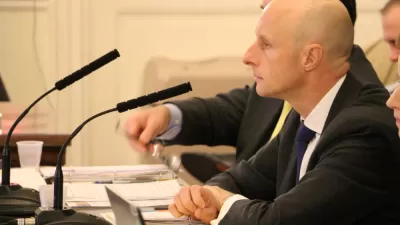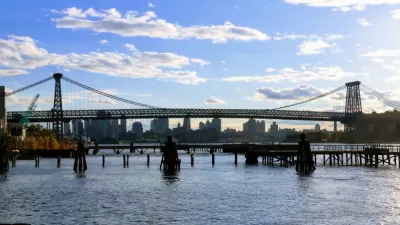An editorial by the New York Times puts the onus for implementing the so-called Fast Forward plan on New York's political leadership.

The New York Times Editorial Board has written in support of the Fast Forward plan, announced recently by New York City Transit Authority President Andy Byford, that would repair the beleaguered MTA subway system in ten years.
While the editorial board calls the plan great relief, it also includes a disclaimer: "now the only question is how long it’ll take for Mr. Cuomo and other leaders to get behind this ambitious proposal and come up with the money to get the job done."
The editorial board describes the Fast Forward plan in more detail, and describes in frank terms the current state of the New York subway and its many components—from signaling to rolling stock to access for riders with special needs. But one of the most important improvements suggested in the Fast Forward plan, according to the editorial, has more to with operations than infrastructure:
…the most important part of Mr. Byford’s plan entails overhauling how the transit system buys equipment, hires contractors, negotiates with unions and manages big projects. The M.T.A. won’t accomplish a fraction of what’s in Fast Forward if it uses the same approach officials have applied in building the first phase of the Second Avenue line or East Side Access…
While Planetizen previously shared an article that estimated the cost of the plan at $19 billion, the editorial says Byford hasn't committed to a cost estimate, and unnamed experts place the potential cost at $40 billion.
FULL STORY: A Daring Plan to Fix the Subways

Alabama: Trump Terminates Settlements for Black Communities Harmed By Raw Sewage
Trump deemed the landmark civil rights agreement “illegal DEI and environmental justice policy.”

Study: Maui’s Plan to Convert Vacation Rentals to Long-Term Housing Could Cause Nearly $1 Billion Economic Loss
The plan would reduce visitor accommodation by 25% resulting in 1,900 jobs lost.

Why Should We Subsidize Public Transportation?
Many public transit agencies face financial stress due to rising costs, declining fare revenue, and declining subsidies. Transit advocates must provide a strong business case for increasing public transit funding.

Paris Bike Boom Leads to Steep Drop in Air Pollution
The French city’s air quality has improved dramatically in the past 20 years, coinciding with a growth in cycling.

Why Housing Costs More to Build in California Than in Texas
Hard costs like labor and materials combined with ‘soft’ costs such as permitting make building in the San Francisco Bay Area almost three times as costly as in Texas cities.

San Diego County Sees a Rise in Urban Coyotes
San Diego County experiences a rise in urban coyotes, as sightings become prevalent throughout its urban neighbourhoods and surrounding areas.
Urban Design for Planners 1: Software Tools
This six-course series explores essential urban design concepts using open source software and equips planners with the tools they need to participate fully in the urban design process.
Planning for Universal Design
Learn the tools for implementing Universal Design in planning regulations.
Smith Gee Studio
Alamo Area Metropolitan Planning Organization
City of Santa Clarita
Institute for Housing and Urban Development Studies (IHS)
City of Grandview
Harvard GSD Executive Education
Toledo-Lucas County Plan Commissions
Salt Lake City
NYU Wagner Graduate School of Public Service





























